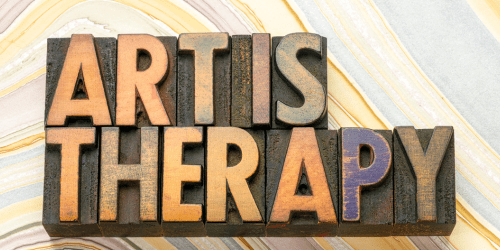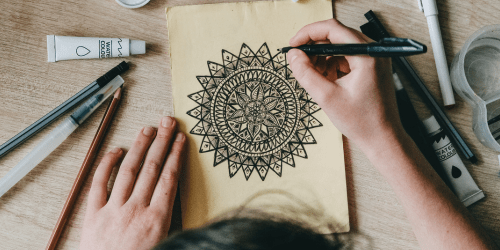Art therapy is a form of expressive therapy that uses the creative process of making art to improve mental, emotional, and physical well-being. It provides a safe and supportive environment for individuals to explore their thoughts, feelings, and experiences through artistic expression. In this article, we’ll explore the benefits of art therapy for mental health and emotional expression, and how it can support healing and personal growth.

Understanding Art Therapy
Art therapy utilizes various art forms, including painting, drawing, sculpting, and collage, to facilitate self-expression and exploration. Unlike traditional art-making, the focus of art therapy is on the process rather than the final product. Through guided exercises and interventions, individuals are encouraged to express themselves freely, without judgment or interpretation.
Benefits of Art Therapy
1. Emotional Release
Art therapy provides a non-verbal outlet for processing and expressing emotions that may be difficult to articulate verbally. Through art-making, individuals can externalize and release pent-up feelings of anger, sadness, anxiety, or grief, promoting emotional catharsis and relief.
2. Self-Exploration
Art therapy offers a unique opportunity for self-exploration and introspection. By engaging in the creative process, individuals can gain insights into their thoughts, beliefs, and experiences, leading to greater self-awareness and understanding.
3. Stress Reduction
Engaging in art-making can have a calming and soothing effect on the nervous system, reducing stress and promoting relaxation. The rhythmic and repetitive motions involved in creating art can induce a state of mindfulness, fostering a sense of peace and tranquility.
4. Enhanced Communication
For individuals who struggle with verbal communication, art therapy provides an alternative means of expressing themselves. Art can serve as a universal language, allowing individuals to communicate thoughts, feelings, and experiences that may be difficult to convey verbally.
5. Trauma Processing
Art therapy can be particularly beneficial for individuals who have experienced trauma or adversity. Through the symbolic language of art, individuals can safely explore and process traumatic memories, reducing the emotional intensity associated with past experiences and promoting healing.
6. Increased Self-Esteem
Engaging in art-making can boost self-esteem and self-confidence by providing opportunities for creative self-expression and accomplishment. As individuals experiment with different art materials and techniques, they develop a sense of mastery and competence, enhancing their self-image and self-worth.
7. Social Connection
Art therapy can facilitate social connection and peer support through group-based activities and collaborative projects. Sharing artwork and personal stories within a supportive group setting can foster a sense of belonging and camaraderie, reducing feelings of isolation and loneliness.
Incorporating Art Therapy into Your Life

1. Explore Different Art Forms
Experiment with various art forms and materials to discover what resonates with you. Whether it’s painting, drawing, sculpting, or collage, find activities that allow you to express yourself authentically and creatively.
2. Create a Safe Space
Designate a quiet and comfortable space where you can engage in art-making without distractions. Surround yourself with inspiring materials and imagery that stimulate your creativity and imagination.
3. Set Intentions
Before starting an art therapy session, set intentions or goals for what you hope to explore or achieve. Whether it’s processing emotions, gaining insight, or simply enjoying the creative process, clarify your intentions to guide your art-making experience.
4. Practice Mindfulness
Approach art-making with a sense of mindfulness and presence, focusing on the sensations, thoughts, and emotions that arise in the moment. Allow yourself to be fully immersed in the creative process, without judgment or self-criticism.
5. Reflect and Journal
After completing an art therapy session, take time to reflect on your artwork and journal about your experience. Notice any themes, insights, or emotions that emerge during the process, and consider how they relate to your overall mental and emotional well-being.
Conclusion
Art therapy offers a powerful and transformative tool for promoting mental health, emotional expression, and personal growth. By providing a creative outlet for self-expression, exploration, and healing, art therapy empowers individuals to navigate life’s challenges with resilience, authenticity, and creativity.
FAQs
- Do I need to be an artist to benefit from art therapy?
- No artistic skill or experience is required to benefit from art therapy. The focus is on the process of creating rather than the final product, allowing individuals of all skill levels to engage in self-expression and exploration.
- Is art therapy suitable for children and adolescents?
- Yes, art therapy is highly beneficial for children and adolescents, as it provides a developmentally appropriate means of expressing thoughts and emotions, processing experiences,


[…] The Benefits of Art Therapy for Mental Health […]